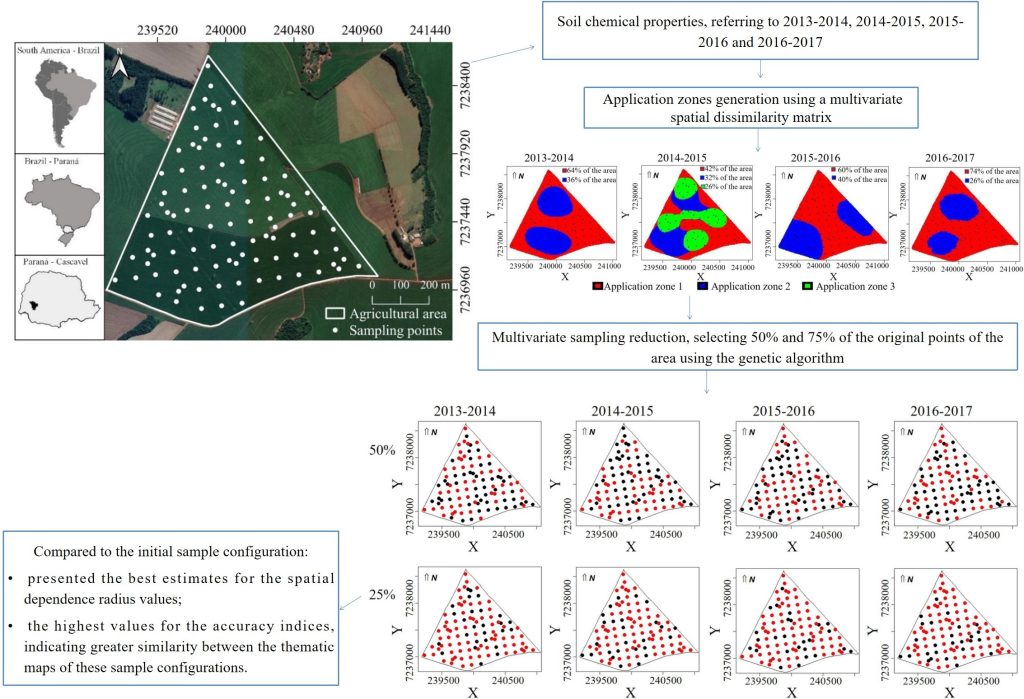Rev. Bras. Ciênc. Solo.2023;47:e0220072.
Spatial multivariate optimization for a sampling redesign with a reduced sample size of soil chemical properties
22/Mar/2023
DOI: 10.36783/18069657rbcs20220072
Graphical Abstract

Highlights
Multivariate spatial dissimilarity matrix.
The best clustering methods were K-means and Ward, with two or three application zones.
The genetic algorithm allowed the reduction of the number of sampling points.
Application zones were satisfactory for obtaining the optimized sample configuration.
The optimized sample reduction with 75 % of the points indicated the best results.
ABSTRACT
Precision agriculture can improve the decision-making process in agricultural production, as it gathers, processes and analyzes spatial data, allowing, for example, specific fertilizer application in each location. One of the proposals to deal with spatial heterogeneity of the soil or the distribution of chemical properties is to define application zones (homogeneous subareas). These zones allow reducing both spatial variability of the yield of the crop under study and of the environmental impacts. Considering the soil data, application zones can also represent strata or indicators to direct future soil sampling, thus seeking sample size reduction, for example. This study aimed to obtain an optimized sampling redesign using application zones generated from the assessment of five clustering methods (Fuzzy C-means, Fanny, K-means, McQuitty and Ward). Soil samples were collected in an agricultural area located in the city of Cascavel-Paraná-Brazil, and analyzed in the laboratory to determine the soil chemical properties, referring to four soybean harvest years (2013-2014, 2014-2015, 2015-2016 and 2016-2017). The application zones were obtained through a dissimilarity matrix that aggregates information about the Euclidean distance between the sample elements and the spatial dependence structure of the properties. Subsequently, an optimized sampling redesign, with reduction of the initial sample points, was obtained in these application zones. For the harvest years under study, the K-means and Ward clustering methods efficiently defined the application zones, dividing the study area into two or three application zones. Among the reduced sample configurations obtained by the optimization process, when comparing the initial sample configuration, the one optimized by 25 % (selecting 75 % of the initial configuration points, which corresponds to 76 sample points) was the most effective in terms of the accuracy indices (overall accuracy, Kappa, Tau). This fact indicates greater similarity between the thematic maps of these sample configurations. In this way, the reduced sample configurations could be used to generate the application zones and reduce the costs regarding the laboratory analyses involved in the study.
358

